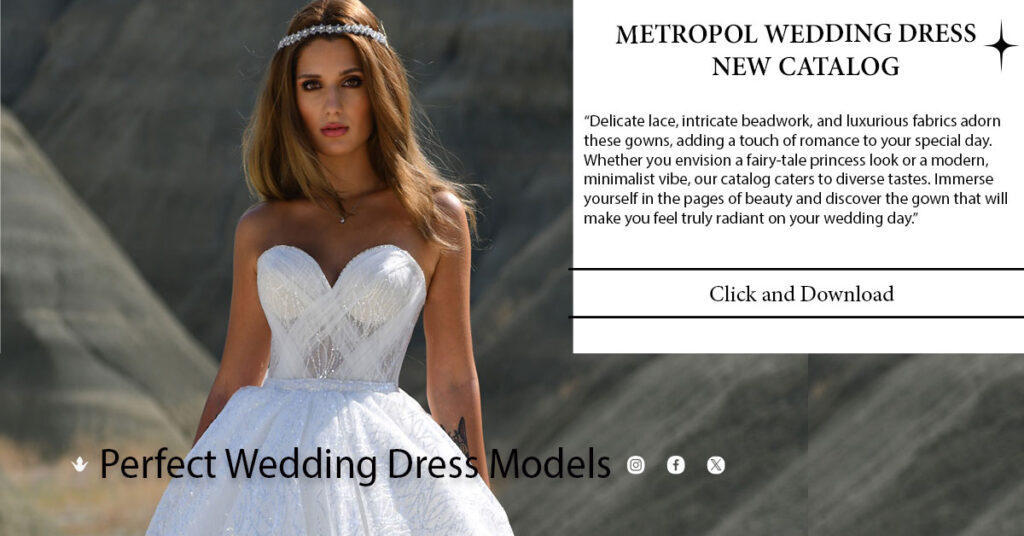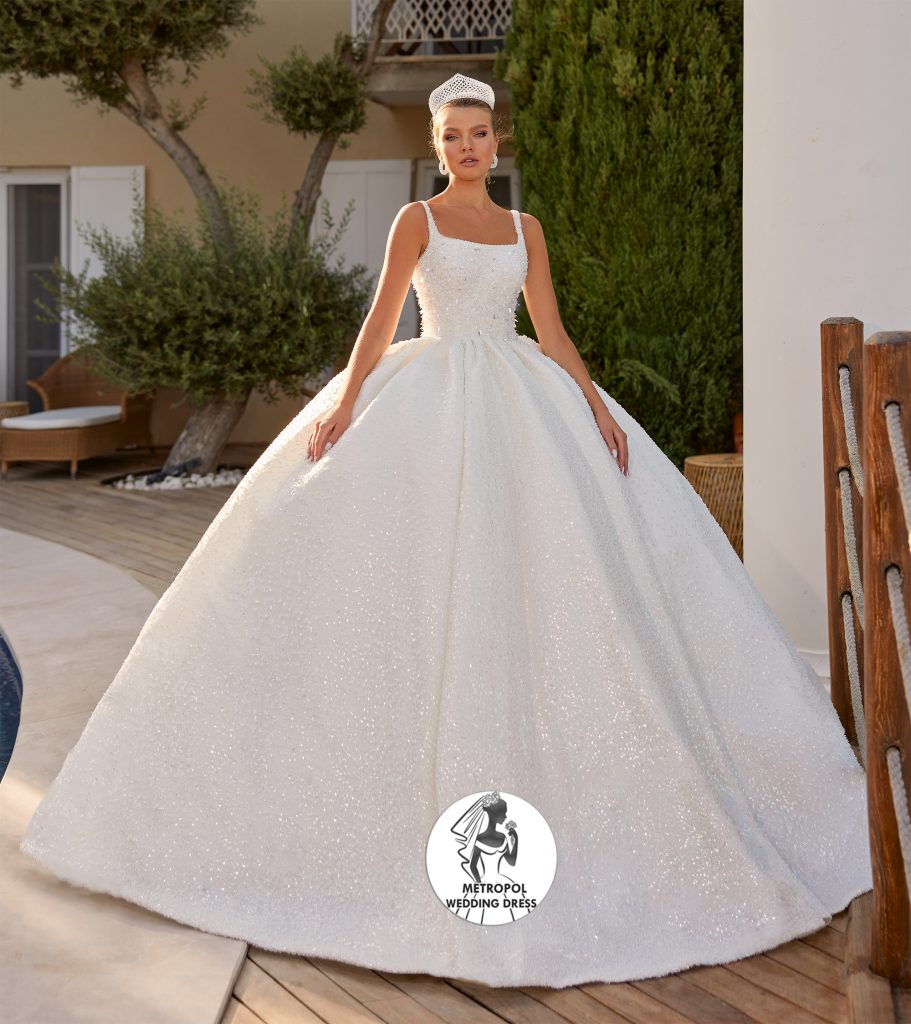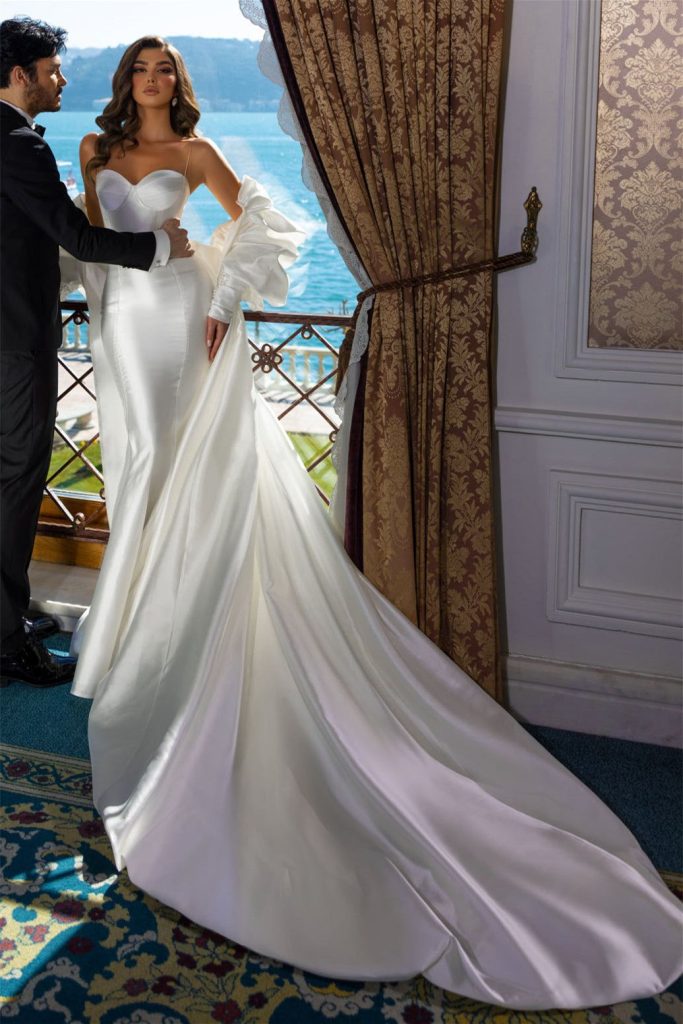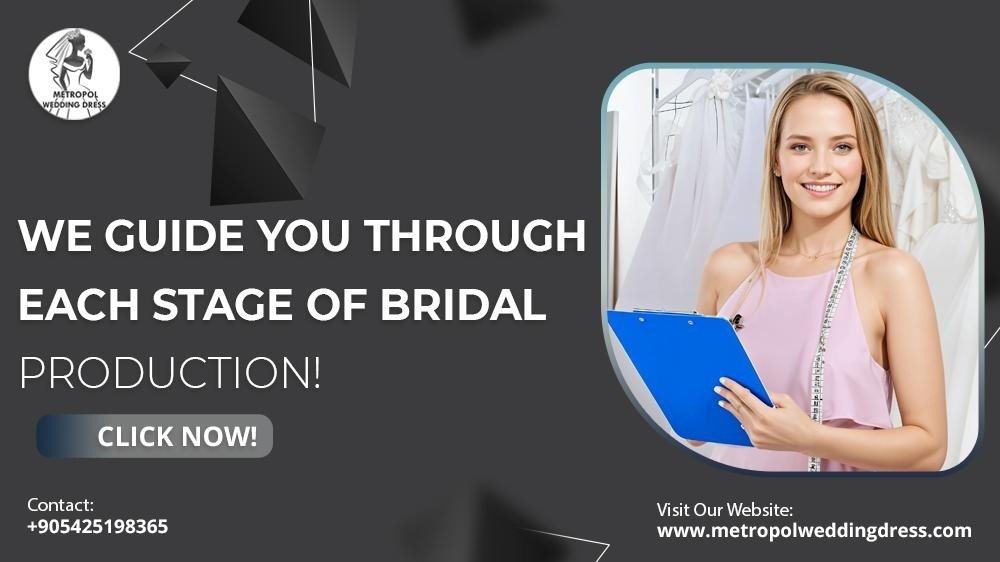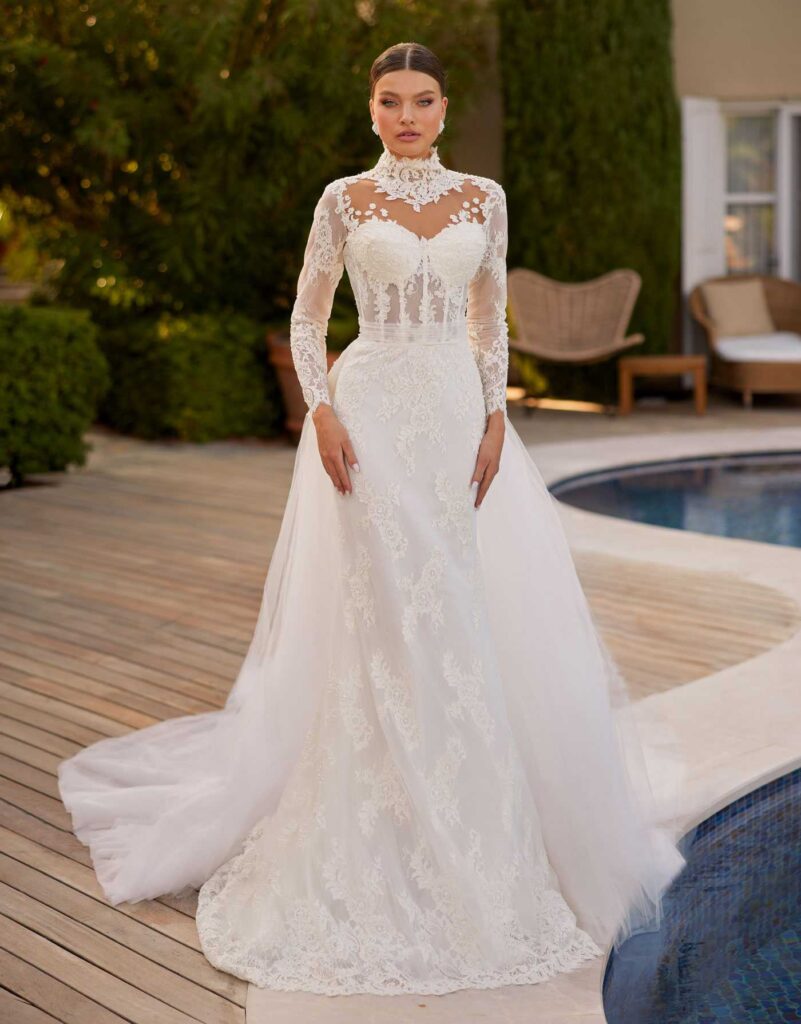
When purchasing a wedding dress, it’s essential to be aware of common mistakes to avoid. Here are some common pitfalls to consider:
- Not Setting a Budget:
Before beginning the search for your wedding dress, establish a budget that you’re comfortable with. This will help you narrow down your options and prevent overspending on a dress that may not fit your financial constraints.
- Buying Too Early or Too Late:
It’s crucial to find the right balance between purchasing your wedding dress too early or too late. If you buy too early, you might change your mind or find better options as you continue shopping. If you buy too late, you may not have enough time to make alterations or find the perfect dress.
- Ignoring Your Body Shape:
Choosing a wedding dress that doesn’t flatter your body shape can lead to discomfort and a lack of confidence on your wedding day. Consult with a professional stylist or salesperson to help you select a dress that accentuates your best features and hides any areas of concern.
- Focusing on Trends Instead of Personal Style:
While it’s essential to be aware of current fashion trends, it’s crucial to choose a wedding dress that reflects your personal style and preferences. Your wedding dress should make you feel comfortable and confident, not just follow the latest trends.
- Skipping Multiple Fittings:
It’s essential to have multiple fittings throughout the dress-buying process to ensure the perfect fit. Skipping fittings or not giving yourself enough time for alterations can result in an ill-fitting dress on your wedding day.
- Forgetting About Comfort:
While you want to look beautiful on your wedding day, it’s equally important to feel comfortable. Choose a dress that allows you to move easily, dance, and enjoy your special day without discomfort.
- Not Considering Weather and Venue:
Make sure to think about the season, weather, and venue when choosing your wedding dress. A heavy, long gown may not be ideal for an outdoor summer wedding, while a strapless dress could be uncomfortable during a winter ceremony.
- Rushing the Decision:
Finding the perfect wedding dress takes time. Don’t rush into a decision just because you’ve visited a few stores or tried on a few dresses. Take your time, do your research, and trust your instincts when making this important choice.
By being aware of these common mistakes, you can make a more informed decision and find the perfect wedding dress that reflects your style, personality, and comfort.
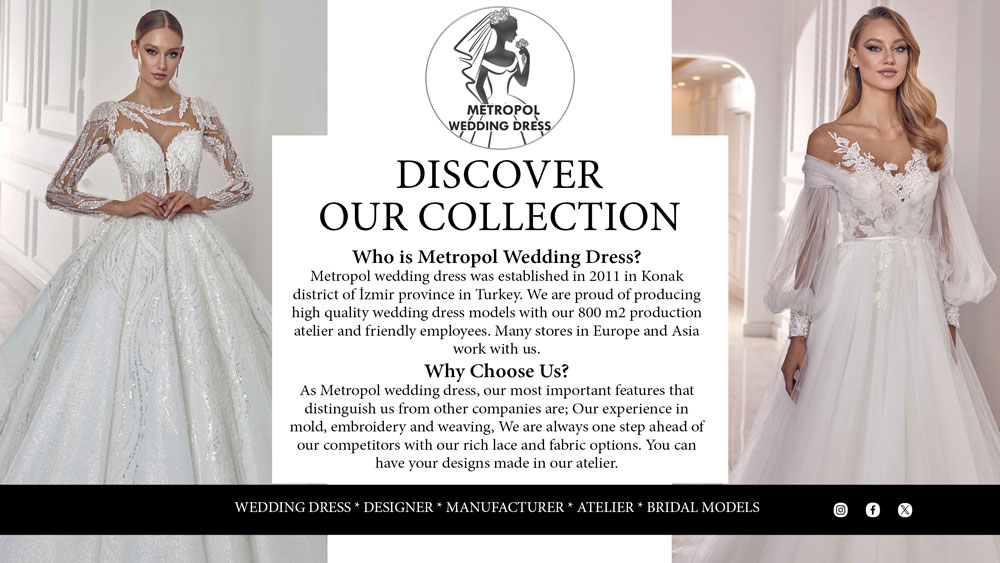
Common Mistakes When Buying Wedding Dresses
When buying a wedding dress, it’s natural to want everything to be perfect for your special day. However, there are several common mistakes that brides may make during the dress shopping process. Here are some of them:
- Not Setting a Budget: One of the most common mistakes is not setting a budget before starting the dress shopping process. Without a budget in mind, it’s easy to fall in love with a dress that is beyond what you can afford, leading to disappointment or overspending.
- Ignoring Body Type: Another mistake is not considering your body type when choosing a dress. It’s essential to select a dress style that flatters your figure and makes you feel comfortable and confident on your wedding day.
- Shopping Too Early or Too Late: Timing is crucial when it comes to wedding dress shopping. Shopping too early may result in feeling overwhelmed by choices or changes in trends, while shopping too late may limit your options or cause stress if alterations are needed.
- Bringing Too Many Opinions: While it’s natural to want input from friends and family, bringing too many people to your dress appointments can lead to conflicting opinions and make the decision-making process more challenging. It’s best to bring a small group of trusted individuals whose opinions you value.
- Focusing Only on Trends: While it’s essential to consider current trends, it’s also important to choose a dress that reflects your personal style and makes you feel like yourself. Don’t feel pressured to choose a dress solely because it’s trendy at the moment.
- Ignoring Alterations: Many brides underestimate the importance of alterations when purchasing a wedding dress. Even if a dress fits well off the rack, alterations are often necessary to achieve a perfect fit and ensure you feel comfortable on your wedding day.
- Not Considering the Wedding Venue: It’s important to choose a dress that suits the style and atmosphere of your wedding venue. For example, a ballgown may not be practical for a beach wedding, while a casual sheath dress may not be suitable for a formal ballroom affair.
- Neglecting Comfort: While aesthetics are important, comfort should not be overlooked. You’ll be wearing your wedding dress for several hours on your wedding day, so it’s essential to choose a dress that you feel comfortable moving and sitting in.
- Rushing the Decision: Choosing a wedding dress is a significant decision, and it’s important not to rush the process. Take your time to try on different styles, visit multiple boutiques, and consider all of your options before making a final decision.
- Forgetting About Undergarments and Accessories: Undergarments and accessories can significantly impact the overall look and fit of your wedding dress. Be sure to wear appropriate undergarments and bring any accessories you plan to wear, such as shoes, jewelry, or veils, to your dress fittings.
By being mindful of these common mistakes and taking a thoughtful and thorough approach to wedding dress shopping, you can find the perfect gown that makes you feel beautiful, confident, and ready to say “I do” on your special day.
The Body Speaks
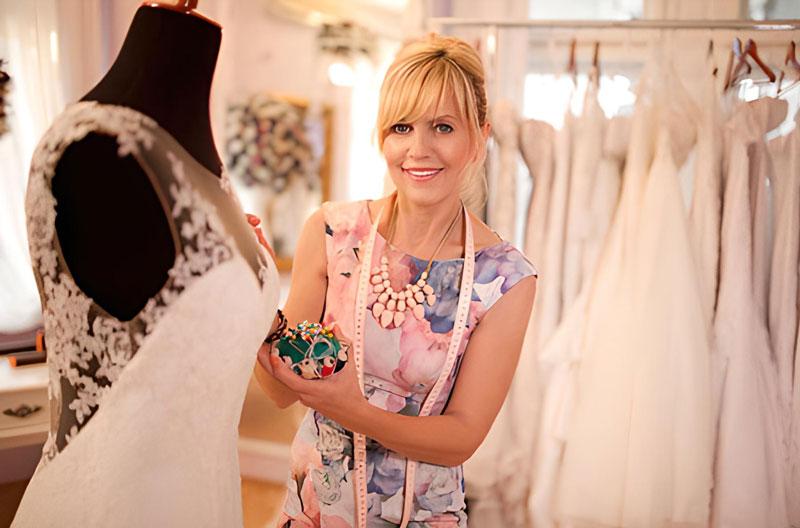
Every woman is beautiful. So is every wedding dress… However, not every wedding dress looks beautiful on every woman. The reason is very simple; because bridal dresses are designed to reveal different aspects of the body.
In order to find the wedding dress suitable for your body type, you should find a professional fashion house that will do your body analysis and offer you the appropriate wedding dress.
Tell Your Wedding Venue Find Your Wedding Dress
Your wedding dress should be suitable for both the spirit of the place and its physical conditions. A 4-meter long tail at a country wedding or a bouncy mini wedding dress at an elegant hotel wedding will make you nothing but funny.
Do not underestimate the issue of what type of wedding dress will be appropriate in which venue. First decide on your wedding venue, then your wedding theme. Then it will be very easy to choose many details such as wedding dresses, invitations and wedding themes.

Common Mistakes When Buying Wedding Dresses
Common Mistakes When Buying Wedding Dresses Choosing the wrong size is one of the most common mistakes that brides make when buying wedding dresses. It’s important to remember that wedding dress sizes can differ from regular clothing sizes, so it’s essential to have accurate measurements taken by a professional or a trusted friend. Keep in mind that alterations may be necessary to achieve the perfect fit. Another mistake that brides make is not considering the wedding venue and theme when selecting a dress.
For instance, if you are having a beach or outdoor wedding, a dress with a long train may not be the best choice. Also, if you are having a traditional ceremony, a more conservative dress may be more appropriate than a daring one. Another mistake that brides make is falling in love with a dress that is out of their budget. It’s essential to set a budget beforehand and stick to it when shopping for a wedding dress to avoid overspending. Additionally, brides may overlook the importance of choosing a dress that complements their body shape. Every bride has a unique body shape, and it’s essential to choose a dress that flatters your body shape, such as an A-line, ball gown, or mermaid dress.
Finally, brides may forget to consider the comfort of the dress when selecting a wedding dress.It’s important to remember that you will be wearing your wedding dress for hours, so you want to make sure you feel comfortable and confident on your special day. Factors such as the weight of the fabric, the length of the dress, and the type of undergarments you wear can all affect your comfort level. Additionally, brides should consider the ease of movement in their dress, especially for dancing and walking down the aisle.
Choosing a wedding dress is undoubtedly one of the most exciting aspects of wedding planning for many brides. However, it can also be one of the most overwhelming and anxiety-inducing parts of the process. With so many styles, fabrics, and designers to choose from, it’s no wonder brides can make some common mistakes when selecting their dream dress. One of the most significant mistakes that brides make is not considering their budget when shopping for a wedding dress. It’s easy to get carried away with the excitement of finding the perfect dress, but overspending on a wedding dress can put a significant dent in your overall wedding budget.
To avoid overspending, it’s important to set a budget before you start shopping for your dress. This will help you narrow down your options and avoid falling in love with a dress that’s way beyond your price range. Another common mistake is not taking into account the venue and theme of the wedding when selecting a dress. It’s important to choose a dress that complements the overall aesthetic of your wedding. For example, if you’re getting married on a beach, a heavy ball gown may not be the best choice.
Similarly, if you’re having a formal evening wedding, a short, casual dress may not be appropriate. Consider the location, season, and time of day of your wedding to ensure that your dress is both comfortable and appropriate for the occasion. Another mistake that brides often make is not taking their body shape and personal style into account. While a certain style may be popular or on trend, it may not necessarily flatter your body type or match your personal style.
It’s essential to choose a dress that accentuates your best features and makes you feel confident and comfortable on your big day. Moreover, many brides make the mistake of not considering the undergarments and accessories that go with their dress. The right undergarments can make a significant difference in how your dress fits and looks on you. Therefore, it’s essential to wear the appropriate undergarments and shoes during your dress fittings to get the best possible fit.When it comes to buying a wedding dress, it’s easy to get caught up in the excitement and overlook important details.
However, avoiding some common mistakes can help ensure that you find the perfect dress for your big day. One mistake that many brides make is not considering their budget. It’s essential to determine your budget before you start shopping for a wedding dress. This will help you avoid falling in love with a dress that is out of your price range and save you time and potential disappointment. Additionally, brides should consider the time frame for ordering and alterations. Wedding dresses often require several fittings and alterations to achieve the perfect fit, so it’s important to start the process early and allow enough time for any necessary adjustments.
Another common mistake that brides make is not doing their research on different wedding dress styles and designers. Before you start shopping, take some time to browse through bridal magazines and websites to get an idea of the different styles and designs that are available. This will help you narrow down your choices and make it easier to find the dress that best suits your personal style and preferences. It’s also important to consider your wedding venue and theme when choosing a wedding dress. A ball gown may not be practical for a beach wedding, and a short cocktail dress may not be appropriate for a formal, black-tie affair. Moreover, brides should also consider their body type and choose a dress that flatters their figure.
Not all dress styles look good on every body type, so it’s crucial to choose a dress that accentuates your best features and hides any flaws. It’s also important to try on different styles and cuts to see which one suits you best. Another mistake that brides make is not setting a realistic budget for their wedding dress. It’s important to remember that the dress is just one aspect of the wedding, and overspending on a dress can leave less money for other important components of the wedding.
Additionally, it’s important to factor in the cost of alterations when setting a budget, as these can add up quickly. It’s also important to shop at reputable bridal salons or online retailers that have a good reputation for quality and customer service. Brides should also be aware of the return policy and ensure that they are comfortable with it before making a purchase. One common mistake that brides make is getting too caught up in the latest trends and choosing a dress that may not be timeless.
While it’s important to choose a dress that reflects your personal style, it’s also important to choose a dress that will stand the test of time and not look outdated in the years to come. A classic silhouette or timeless design may be a better option for brides who want to ensure their dress remains beautiful and relevant in the future. Another mistake that brides make is waiting too long to start shopping for their wedding dress.
It’s important to start looking for a dress at least 6-12 months before the wedding date to allow enough time for the dress to be ordered, shipped, and altered. Waiting too long can lead to added stress and limited options, as popular styles may become sold out or unavailable. Brides should also consider their wedding venue and the season in which they are getting married when choosing their dress. A heavy, long-sleeved gown may not be the best choice for a summer beach wedding,
Let’s Do One Last Rehearsal
A “one last rehearsal” can be beneficial in ensuring that everyone involved in the event is well-prepared and confident about their roles. Here’s a step-by-step guide to help you conduct a successful rehearsal:
- Identify Key Participants:
Determine who needs to be present at the rehearsal. This usually includes the bride and groom, wedding party members (such as bridesmaids and groomsmen), immediate family members, and key vendors like the officiant, photographer, and venue staff.
- Choose a Rehearsal Time:
Pick a time that works for everyone involved, taking into consideration any travel or scheduling constraints. Ideally, the rehearsal should be held the day before the wedding or a few hours before the ceremony.
- Select a Rehearsal Location:
Choose a location that closely resembles the actual wedding venue. This could be the ceremony site itself or a similar space nearby. Familiarizing everyone with the actual location is preferable, but an alternative site can suffice if necessary.
- Prepare a Rehearsal Script:
Create a step-by-step outline of the wedding ceremony, including entrance cues, processional order, readings, vows, and recessional. This will help ensure that everyone knows their roles and responsibilities.
- Designate a Rehearsal Director:
Assign someone to oversee the rehearsal and guide participants through the process. This person should be familiar with the script and able to provide clear instructions.
- Conduct the Rehearsal:
Begin by running through the entire ceremony, pausing as needed to provide instructions or clarify any questions. Encourage participants to ask questions and offer feedback.
- Address Any Concerns or Issues:
Take note of any concerns raised during the rehearsal, such as timing issues, seating arrangements, or questions about specific ceremony elements. Address these concerns promptly to ensure a smooth wedding day.
- Review and Finalize:
Once the rehearsal is complete, review the key points and confirm any necessary adjustments. Make sure everyone understands their roles and responsibilities, and address any lingering questions or concerns.
- Thank Everyone:
Express your appreciation to all participants for their time and effort in attending the rehearsal. This will help create a positive atmosphere and set the tone for the wedding day.
By following these steps, you can ensure a well-organized and productive rehearsal that will help everyone feel more confident and prepared for your special day.
When the weight lost in the rush of wedding preparations and the caloric escapades caused by stress are mixed together; It is not known whether the weight will be gained or lost before the wedding.
Therefore, be you, delay the modifications to be made on your wedding dress as much as possible. Thanks to the renovations to be made two weeks before the wedding and the last rehearsal a week ago, your wedding dress will fit well on you.
Of course! Whether you’re preparing for a wedding, a presentation, or any other important event, rehearsal is key to ensuring everything goes smoothly. Let’s do one last rehearsal to make sure you’re fully prepared:
- Preparation: Take a moment to gather all the necessary materials or information you’ll need for the rehearsal. This might include any notes, props, slides, or other items relevant to your presentation or event.
- Setup: Set up your rehearsal space to mimic the actual event as closely as possible. If you’re practicing a presentation, make sure your slides are ready to go, and your microphone or other equipment is set up correctly. If you’re rehearsing for a wedding, gather your bridal party or participants, and walk through the ceremony from start to finish.
- Run-through: Start your rehearsal from the beginning and go through each step or segment of your presentation or event. Pay attention to timing, transitions, and any specific cues or instructions you need to follow. If you encounter any issues or areas for improvement, take note of them and make adjustments as needed.
- Feedback: If possible, enlist the help of a trusted friend, family member, or colleague to provide feedback during your rehearsal. They can offer valuable insights, identify areas for improvement, and help ensure you’re fully prepared for the real thing.
- Practice: Practice, practice, practice! Rehearse your presentation or event multiple times until you feel confident and comfortable with the material. Repetition is key to building confidence and ensuring a successful outcome.
- Final Touches: Before wrapping up your rehearsal, take a moment to review any final details or last-minute adjustments you need to make. Double-check your equipment, timing, and any other logistical considerations to ensure everything is in place for the actual event.
- Reflect and Relax: After completing your rehearsal, take some time to reflect on your performance and any lessons learned. Celebrate your accomplishments and give yourself a well-deserved break before the big day.
Remember, rehearsals are a valuable opportunity to fine-tune your skills, iron out any kinks, and ensure a seamless and successful outcome. By taking the time to rehearse thoroughly, you’ll feel more confident and prepared to deliver your best performance when it counts.
Skirt Length and Shoe Relation
The length of your skirt or dress can significantly impact the overall look and style of your outfit, as well as how your shoes are showcased. Here are some general guidelines for how skirt length relates to shoe choice:
- Floor-Length Skirts or Dresses:
- Floor-length skirts or dresses typically touch the ground and may require you to wear heels to prevent the hem from dragging.
- When wearing floor-length attire, opt for heels or shoes with a moderate to high heel height to ensure the hem doesn’t drag or get caught underfoot.
- Consider the fabric and style of the skirt or dress when choosing shoes. For formal occasions, elegant heels or dressy sandals may be appropriate, while for more casual events, you might opt for flats or wedges.
- Ankle-Length Skirts or Dresses:
- Ankle-length skirts or dresses end at or slightly above the ankle bone.
- Ankle boots, heels, or flats can all complement ankle-length skirts or dresses, depending on the style and occasion.
- Consider the silhouette and style of the skirt or dress when selecting shoes. For a more formal look, sleek heels or dressy ankle boots may be suitable, while for a casual vibe, you might opt for flats or sneakers.
- Calf-Length Skirts or Dresses:
- Calf-length skirts or dresses end between the knee and ankle, typically around mid-calf.
- Depending on the style and occasion, you can pair calf-length skirts or dresses with heels, flats, or even boots.
- Consider the proportions of your outfit when choosing shoes. For example, if the skirt or dress has a voluminous silhouette, sleek heels can help balance the look, while flats or sandals can add a casual and comfortable touch.
- Knee-Length Skirts or Dresses:
- Knee-length skirts or dresses end at or just above the knee.
- Knee-length attire offers versatility in shoe choice, allowing you to wear heels, flats, sandals, or even sneakers depending on the occasion and personal style.
- Consider the formality of the event and the style of the skirt or dress when selecting shoes. For a more formal look, opt for heels or dressy flats, while for a casual vibe, sneakers or sandals may be appropriate.
- Mini Skirts or Dresses:
- Mini skirts or dresses are short in length, typically ending several inches above the knee.
- When wearing mini skirts or dresses, consider the occasion and your comfort level when choosing shoes. Heels can elongate the legs and add a dressy touch, while flats or sneakers can offer a more casual and comfortable option.
- Pay attention to proportions and balance when styling mini skirts or dresses with shoes. If the skirt or dress is short and fitted, consider pairing it with heels to create a streamlined silhouette and prevent the outfit from looking overly casual.
Ultimately, the relationship between skirt length and shoe choice is a personal preference and can vary based on individual style, comfort, and the occasion. Experiment with different shoe styles to find what works best for you and complements your outfit while expressing your unique sense of style.
The hem of your wedding dress should definitely be taken with the shoes you will use it with. Even a small difference in heel size that will not be noticeable is very important.
A few inches short of your skirt can make you look like a doll, while a few inches too short can make your skirt catch on your feet as you walk. The length of your skirt should ensure that your shoes are not visible while walking, but should not sweep the floor.
The relationship between skirt length and shoe height is an important consideration when putting together an outfit, as it can significantly impact the overall appearance and balance of the ensemble. Here are some general guidelines to help you find the right combination:
- Ankle-Length Skirts:
Ankle-length skirts are versatile and can be paired with various shoe heights. For a more casual look, you can wear flats or low-heeled shoes. To create a dressier appearance, opt for pumps or mid-height heels.
- Knee-Length Skirts:
Knee-length skirts are also quite versatile. With this length, you can wear flats, low-heeled shoes, or even mid-height heels, depending on the occasion and desired look. A good rule of thumb is to ensure that the shoe heel is not taller than the skirt length.
- Tea-Length Skirts:
Tea-length skirts fall between the knee and the ankle, typically landing around the mid-calf area. For this length, it’s best to choose shoes with low to mid-height heels to maintain balance and avoid looking too top-heavy. Avoid wearing flats, as they may make the outfit appear disproportionate.
- Mini Skirts:
Mini skirts are short and generally hit above the knee. To maintain balance, it’s best to wear shoes with higher heels, such as pumps, stilettos, or even platforms. Flats or low-heeled shoes can make the overall look seem unbalanced.
- Maxi Skirts:
Maxi skirts are floor-length and often create a bohemian or elegant appearance. When pairing maxi skirts with shoes, choose flats or low-heeled sandals for a more casual look. For a dressier occasion, you can wear high-heeled shoes, but be mindful of the heel height to avoid appearing too top-heavy.
In summary, the relationship between skirt length and shoe height is crucial for creating a balanced and visually appealing outfit. Consider the occasion, desired look, and the specific skirt and shoe styles to find the perfect combination for your ensemble.
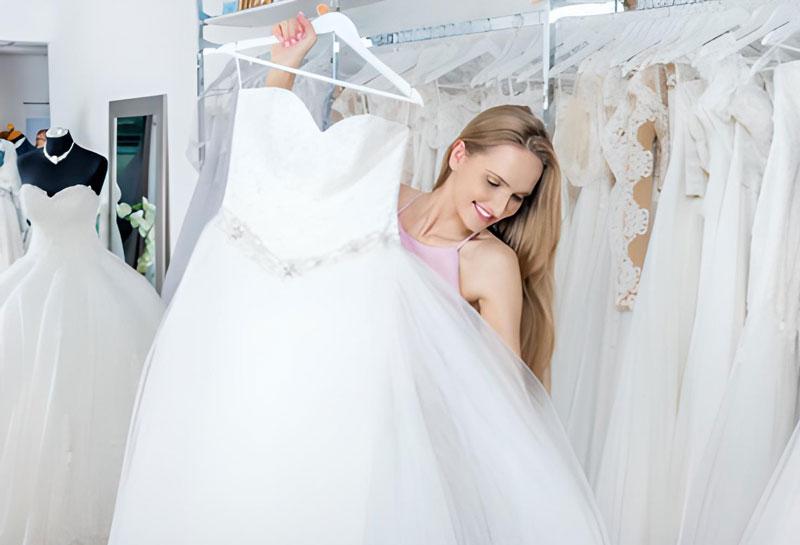
Common Mistakes When Buying Wedding Dresses
Hair & Skin & Wedding Dress Harmony
Creating harmony between your hair, skin tone, and wedding dress is essential for achieving a cohesive and beautiful bridal look. Here are some tips to ensure that your hair and skin complement your wedding dress perfectly:
- Consider Your Skin Tone: Your skin tone plays a significant role in determining which colors and shades will flatter you the most. If you have a warm undertone, colors like ivory, champagne, and gold will complement your complexion beautifully. If you have a cool undertone, shades like pure white, silver, and icy pastels may be more flattering. Consider your skin tone when selecting the color of your wedding dress to ensure it enhances your natural glow.
- Choose Complementary Hair Colors: Your hair color should complement both your skin tone and the color of your wedding dress. If you’re planning to dye or highlight your hair before the wedding, consider consulting with a professional colorist to find the most flattering shade. If you’re keeping your natural hair color, experiment with different hairstyles and hair accessories to enhance your overall bridal look.
- Coordinate Hair Accessories: Hair accessories can add an extra touch of elegance and style to your bridal ensemble. Choose hair accessories that complement the style and embellishments of your wedding dress while also enhancing your hair color and skin tone. Whether you opt for a delicate veil, sparkling hairpins, or a floral crown, make sure it harmonizes with your overall look and enhances your natural beauty.
- Experiment with Hairstyles: Your hairstyle should complement the neckline and silhouette of your wedding dress while also flattering your face shape and features. Experiment with different hairstyles during your hair trial to find the perfect look for your wedding day. Whether you prefer an elegant updo, romantic curls, or sleek and straight hair, choose a hairstyle that makes you feel confident and beautiful.
- Consider Makeup: Your makeup should enhance your natural features and complement your wedding dress and hairstyle. Consider your skin tone, dress color, and overall bridal aesthetic when choosing makeup shades and finishes. Whether you opt for a soft and romantic look or a bold and glamorous style, make sure your makeup coordinates harmoniously with your hair, skin, and dress to create a cohesive and stunning bridal look.
By considering these factors and paying attention to the harmony between your hair, skin tone, and wedding dress, you can create a bridal look that is timeless, elegant, and truly breathtaking on your special day. Don’t hesitate to consult with professionals, such as hair stylists, makeup artists, and bridal consultants, for expert advice and guidance to help you achieve your desired bridal aesthetic.
In recent years, alternative colors to white have been used in wedding dresses. Those who want to keep up with this fashion, attention! When choosing your wedding dress color, be sure to consider your skin and hair color.
A wrong choice can make you look pale and without energy on that beautiful night when you should shine like a star. For example, a blonde bride should prefer a stone-colored wedding dress instead of a baby-mouth wedding dress, and a brunette bride should prefer off-white colors.
Achieving harmony between your hair, skin, and wedding dress is essential for creating a cohesive and beautiful look on your special day. Here are some tips to help you achieve this balance:
- Hair:
Choose a hairstyle that complements your wedding dress and enhances your facial features. Consider the neckline of your dress, as it will influence the best hairstyle option. For example, an updo would suit a dress with a high neckline, while loose curls may be more suitable for a strapless or off-the-shoulder dress.
- Skin:
Achieving radiant skin is crucial for a harmonious look. Start a skincare routine well in advance of your wedding day, focusing on hydration and any specific concerns like acne or hyperpigmentation. Schedule a professional facial or skin treatment a few weeks before the wedding to ensure your skin is in optimal condition.
On the day of the wedding, consider using a lightweight makeup base that allows your natural skin to shine through. Opt for a natural-looking makeup style that enhances your features without overpowering your overall look.
- Wedding Dress:
Choose a wedding dress that flatters your body shape and makes you feel comfortable and confident. Consider the fabric, color, and silhouette, ensuring they align with your personal style and the overall theme of the wedding.
- Coordinating Accessories:
Select hair accessories that complement your hairstyle and dress. For example, if you’re wearing an updo, a delicate hair comb or headpiece can add elegance. If you have loose curls, consider a statement hairpin or a beautiful hairband.
Choose jewelry that accentuates your wedding dress without overpowering it. Earrings, a necklace, and a bracelet are classic options, but ensure they are in proportion to your dress and body.
- Color Coordination:
Consider the colors of your hair, skin, and wedding dress when selecting makeup and accessories. For example, if you have warm undertones in your skin and hair, opt for warm-toned makeup and accessories that complement these features.
By focusing on these aspects and working closely with your hairstylist, makeup artist, and dress consultant, you can create a harmonious look that enhances your natural beauty and makes you feel confident and stunning on your wedding day.


